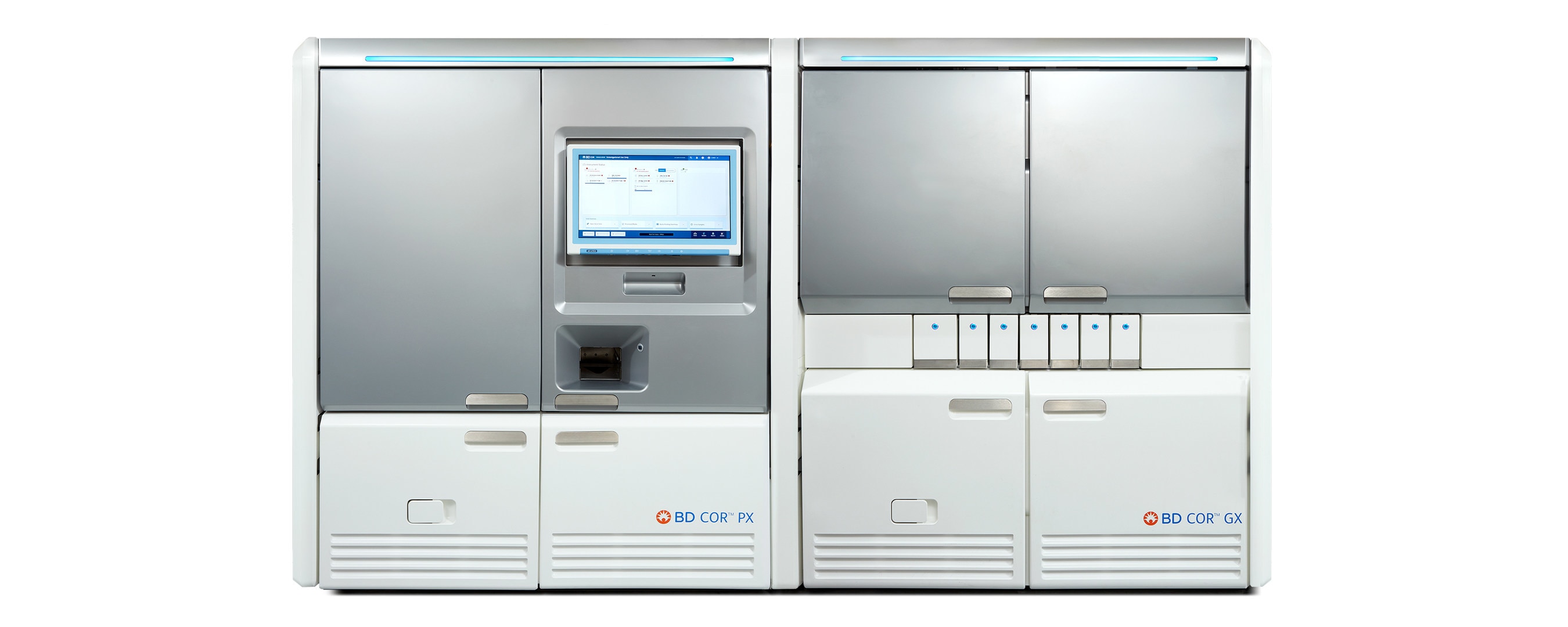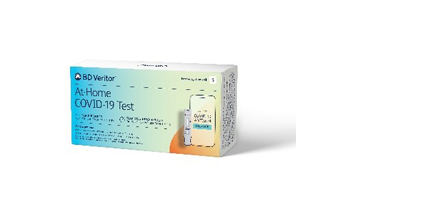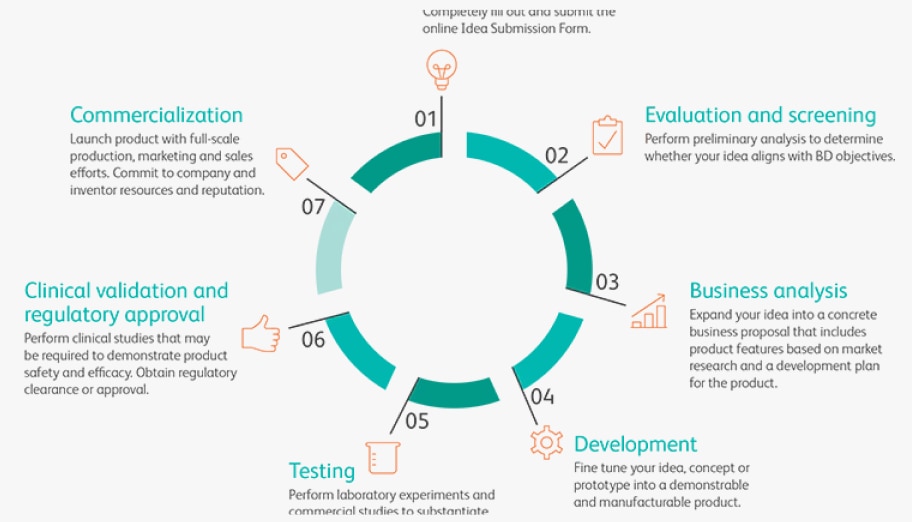The patient’s condition worsens—he has developed a high fever, a cough, nausea and he is beginning to feel dizzy. He goes to the emergency room for tests, including blood and urine collection; during analysis, his condition continues to deteriorate.
true
Innovation at BD
Advancing the world of health™ for billions of people worldwide and addressing some of the greatest health challenges
- Overview
- Innovation and Engagement Center
- Smart Connected Care
- New Care Settings
- Chronic Disease Outcomes
- BD Idea Submission Process
Healthcare providers rely on us for comprehensive solutions across discovery, diagnostics and delivery of care at critical moments throughout their patients’ lives.
By leveraging our global network of cutting-edge science and technology, powerful partnerships and the brightest minds in med tech, we’re helping healthcare professionals and organizations achieve better outcomes and patient experiences, while optimizing care delivery.
As we continuously innovate our category-leading core platforms, we're also focused on three irreversible trends driving the future of healthcare.
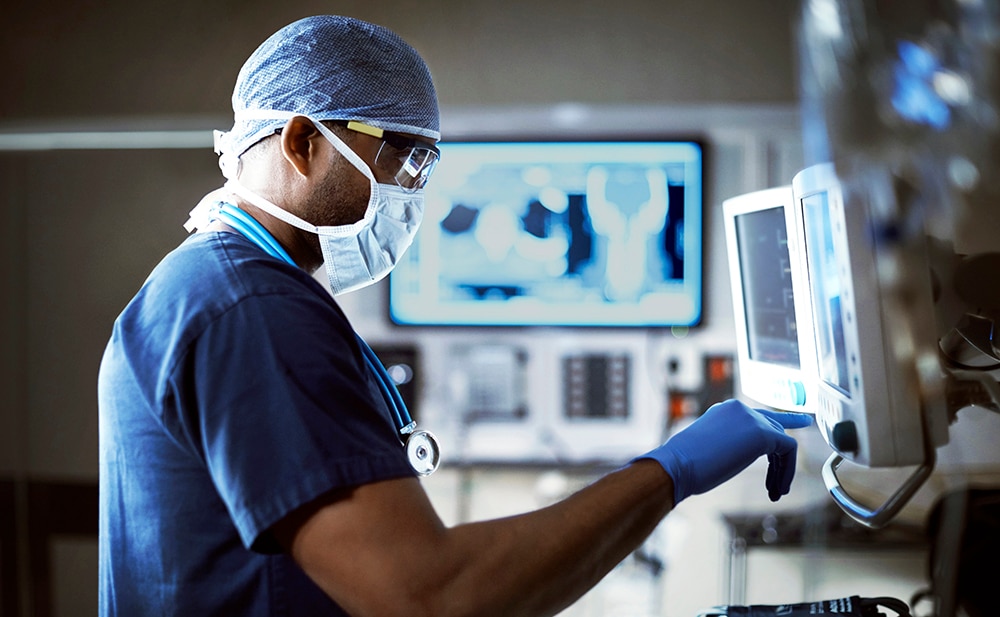
Smart connected care
Artificial intelligence, informatics and robotics will transform healthcare processes, tools and treatments
Example areas:
- Smart medical devices
- Lab automation and informatics
- Connected medication management

New care settings
Shifts into new settings create major opportunities to improve patient outcomes and costs
Example areas:
- Point of care diagnostics
- Non-acute medication management
- Home urinary incontinence

Chronic disease outcomes
Medical technology will have a growing role in improving outcomes in chronic diseases
Example areas:
- Self-administered drug delivery
- Molecular diagnostics
- End-stage kidney disease
Explore
Explore
Explore
Exchange
Exchange
Experience
Experience
Engage
Engage
Educate
Educate
Excite
Excite
The patient visits his doctor to discuss his symptoms, particularly a lump he discovered a few days ago.
The specimens taken from the patient in the ER arrive at the sample reception area, where a range of chemistry and haematology tests are conducted.
The patient’s blood and urine specimens taken in the ER arrive at the microbiology laboratory for analysis to determine a diagnosis.
In the meantime, the patient is transferred to the intensive care unit as sepsis is suspected. He is under the care of the ICU to be closely monitored until his condition stabilises.
The patient returns to the hospital six months later with new complications; he is feeling very ill with severe abdominal pain. An examination and ultrasound confirm a mass consistent with lymphoma. The decision is taken to remove the tumour.
Seven days after surgery, the patient’s condition has improved and he is discharged. Following his recovery plan from surgery, he starts a new treatment for lymphoma on a pre-determined schedule.
Chemotherapy medications are prepared on-demand, specifically for each patient. The patient waits in the outpatient ward while the chemotherapy drugs are compounded in the aseptic pharmacy.
When the patient goes home, he has to manage multiple medications and their instructions, which can be complex. He knows he must be careful to take the right drugs, in the right quantity, at the right time.
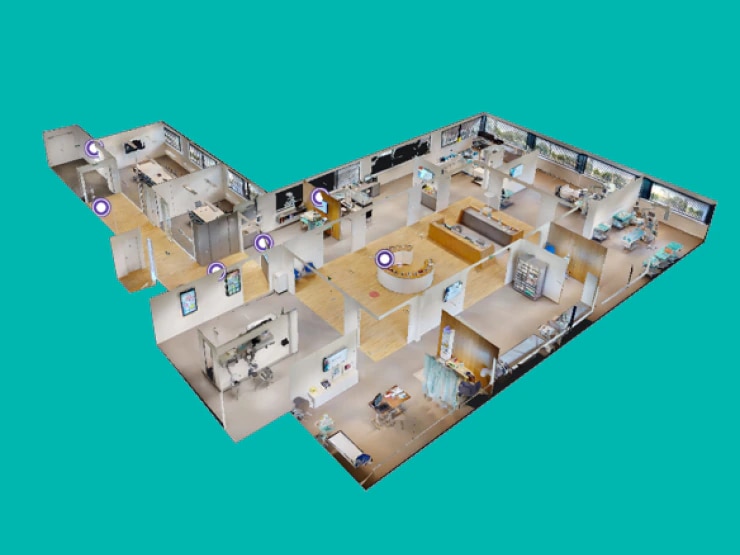
Collaborate to innovate
Learn how BD is partnering with the healthcare community — researchers, clinicians, thought leaders and policymakers — to meet the needs of better patient care today and in the future.
Artificial intelligence, informatics and robotics will transform healthcare processes, tools and treatments
Experience the future of lab automation today
We understand that laboratories are challenged to meet the needs of their customers with continuously evolving sample volumes, shortages of qualified staff, increasing financial pressure from reduced budgets and changing diagnostic methods.
BD Kiestra™ Laboratory Automation Solutions are uniquely positioned to offer standardized and scalable solutions for inoculation, incubation, plate imaging and reading and follow-up testing. BD Kiestra™ solutions help prepare laboratories to meet these changing demands and achieve efficient, timely and cost-effective clinical bacteriological testing.1,2

Create seamless visibility and insights across medication management solutions
The BD HealthSight™ platform for enterprise medication management is our unique combination of connective technologies, analytics and expert services that close gaps and create seamless visibility across BD medication management solutions. As part of this platform, the BD HealthSight™ Diversion Management Analytics application assists with opioid drug diversion investigations by creating an investigation workflow to monitor, triage and assign potential diversion cases to specific investigators. It utilizes machine learning algorithms and multiple dispensing behaviors to surface clinicians whose behavior indicates higher risk for diversion. The application also aggregates EMR and dispensing cabinet data to automate a normally time consuming and tedious manual review process to reconcile and automatically flag anomalous dispense, administration and waste transactions.

- Page N. Transforming a Canadian microbiology laboratory: laboratory automation and lean processes reduce errors, improve standardization and result quality while improving productivity. BMJ Qual Saf. 2015;24(11):718-740.
- Croxatto A et al. Comparison of inoculation with the InoqulA and WASP automated systems with manual inoculation. J Clin Microbiol. 2016;53(7):2298-2307.
Shifts into new settings create major opportunities to improve patient outcomes and costs
Explore the first at-home COVID-19 test to use smartphone to interpret and deliver results
BD developed this new rapid, digitally read, lateral flow antigen self-test to make COVID-19 testing faster and easier for people to complete in the privacy and safety of their own homes. The BD Veritor™ At-Home COVID-19 Test1 will use a simple, pain-free nasal swab and an easy-to-use mobile app from Scanwell Health that yields reliable test results in 15 minutes. The mobile device's camera is then used to capture, analyze and interpret the results, which eliminates the human subjectivity of a visually read test.
Discover a breakthrough for women with urinary incontinence
Until now, women with urinary incontinence had limited options, such as invasive catheters, to help manage their incontinence. The first-of-its-kind PureWick™ System was created to provide women with a non-invasive option to manage their urinary incontinence. The PureWick™ System pulls urine away from the PureWick™ Female External Catheter to a sealed collection canister. It fits on a nightstand or small end table.

- About the BD Veritor™ At-Home COVID-19 Test. The BD Veritor™ At-Home COVID-19 Test has not been FDA cleared or approved; but has been authorized by FDA under EUA. This product has been authorized only for the detection of proteins from SARS-CoV-2, not for any other viruses or pathogens. The emergency use of this product is only authorized for the duration of the declaration that circumstances exist justifying the authorization of emergency use of IVDs for detection and/or diagnosis of COVID-19 under Section 564(b)(1) of the Federal Food, Drug and Cosmetic Act, 21 U.S.C. § 360bbb-3(b)(1), unless the declaration is terminated or authorization is revoked sooner.
Medical technology will have a growing role in improving outcomes in chronic diseases
Extend the power of HPV testing
In the post-vaccination era the prevalence of high-risk genotypes may change, making it crucial to identify high-risk genotypes individually. The BD Onclarity™ HPV Assay is FDA-approved for extended genotyping, offering flexibility to adapt to changing screening guidelines and evolving patient management guidance.
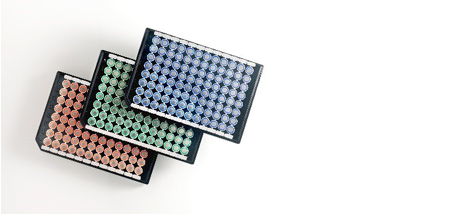
Experience a new generation of hemodialysis catheters
The Pristine™ Long-Term Hemodialysis Catheter is our next generation of hemodialysis catheters. The catheter is uniquely designed to help facilitate accurate Y-Tip™ distal lumen placement in the mid right atrium. The notched tip is designed to help resist positional occlusion. Its side-hole free tip is designed to help minimize thrombus adhesion that can be associated with side-hole catheters and to help facilitate blood clot aspiration prior to hemodialysis treatment. The Pristine™ Catheter demonstrated high flow rates at low pressures2 and with its symmetric tip demonstrated low recirculation rates in both forward and reverse3.
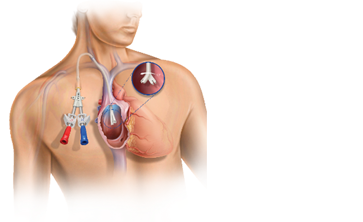
2. Tested using 19 cm (n=38); 23 cm (n=40); 28 cm (n=38); 33 cm (n=40) and 55 cm (n=39) tip-to-cuff length Pristine™ Long-Term Hemodialysis Catheters. Flow test performed using glycerin: water solution with a viscosity of 3.2-3.7 cP at 36-38° C. At an arterial maximum pressure of -250 mmHg or less, the maximum flow rates observed were 500 mL/min (19 cm through 33 cm tip-to-cuff lengths) and 379 mL/min (55 cm tip-to-cuff length). In order to show the flow rate at -250 mmHg pressure limit, the linear curve fit for the negative side was used to find the flow rate corresponding to indicated pressure, then the flow rate value was used to estimate the positive venous pressure. Bench data on file. Bench data may not necessarily correlate to clinical performance. Different test methods may yield different results.
3. Tested using 55 cm tip-to-cuff length Pristine™ Long-Term Hemodialysis Catheters (n=37). Recirculation test performed using 5% saline as blood simulant at a blood flow rate of ~5 liters/minute and catheter flow rate of 350 mL/min. The mean recirculation rates were 2.7% in forward flow and 2.8% in reverse flow. Bench data on file, Becton, Dickinson and Company, Tempe, AZ. Bench data may not necessarily correlate to clinical performance. Different test methods may yield different results.
Your idea may have the potential to impact the lives of millions of people. But a great idea is not enough.
To turn concept into reality, you need a relationship with an experienced medical technology innovator and manufacturer—one with the resources, expertise, and integrity to make it happen.
At BD, our success stems from partnering with inspired individuals and organizations on a global basis to bring innovative, new products that help manage or reduce costs, improve the patient experience and achieve better outcomes. Read more in the BD Idea Submission program brochure.
To learn more about the BD Idea Submission program, view the Idea Submission Brochure
As a global leader in healthcare, BD has the network and capabilities to bring your idea into mainstream use. We offer:
- More than 100 years of experience in medical technology and life sciences innovation, development, manufacturing, and commercialization
- Hundreds of products and solutions that are changing the landscape of health care
- Multiple new products and line extensions introduced annually
- A tradition of product and process innovation
- Early stage review of your idea by top-level R&D leaders in the company
- Research and development resources to enhance your product’s potential
- Hundreds of millions of dollars invested annually in the creation and acquisition of new technologies
- Needed infrastructure for global product manufacturing and distribution
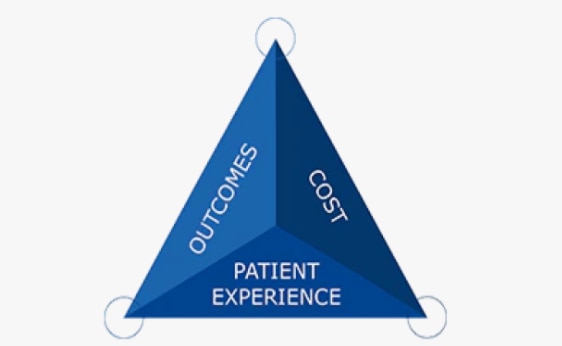
×
![partner-idea-commercialization.png]()
To ensure prompt consideration and proper protection of your idea, please follow the steps below to submit your idea to BD:
- Complete the BD Idea Submission Form, paying special attention to the general description of your product. This is the baseline information that BD will need to determine whether your submission can be considered for further investigation.
- If more than one person has contributed to the concept, list all such persons on the BD Idea Submission Form.
- Following preliminary review, if BD is interested in moving forward, BD may request that both parties enter into a Confidentiality Agreement. This agreement allows for the exchange of more detailed information and helps protect both you and BD.
- BD will examine your idea thoroughly and contact you regarding next steps.
In your initial submission, please do not provide confidential information.
BD assumes no obligation to protect, retain, or hold confidential any information disclosed in any submission or in conversations prior to a formal written agreement between you and BD. BD may be aware of other products or concepts that could impact our decision to adopt your product idea.
To protect your product idea, we recommend applying for patent protection prior to submitting your proposal.
BD strives to generate the greatest social and commercial benefit from outside ideas. Should we move forward, BD will work with you to develop a mutually beneficial arrangement that may include license agreements for the development and commercialization of your product.
Send us an idea now through the online Idea Submission Form.
true



